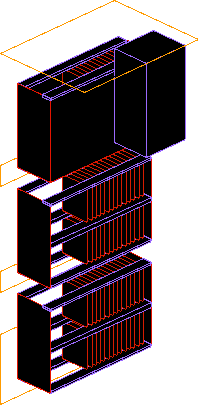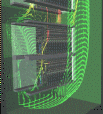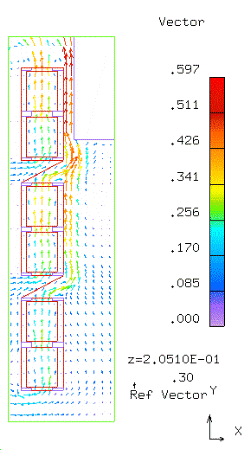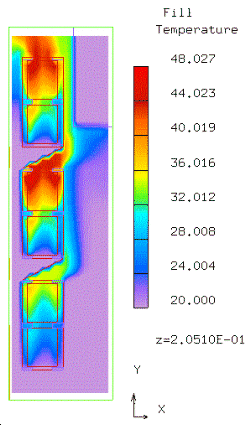一个通信交换系统内部的自然对流换热
日期:2012-06-19
Natural Convection in a Telecommunications Exchange System |
||||||||||||||||||||||||||||||||||||||||||
|
The system shown is naturally ventilated and consists of six sub-racks mounted vertically. Each sub-rack contains 15 PCBs with 1" spacing, and the total power dissipated is 646 Watts. The front door of the enclosure is perforated at three levels to allow ambient air to enter. The roof is also perforated to allow the heated air to leave. Angled baffle plates are placed between sub-racks 2 and 3, and between sub-racks 4 and 5, so as to ensure that fresh, ambient air is introduced at these points. Flomerics were supplied with the above problem definition by a major European telecommunications equipment manufacturer, and were asked to simulate the problem without prior access to the measured results. A comparison of predicted and measured data showed good agreement (see Table), and convinced the company concerned to license the software for application in future projects.
Results
Note that the most critical chimney effect is in slot 8 which is the hottest.
|
||||||||||||||||||||||||||||||||||||||||||









 Air temperature measurements were made at four different horizontal locations in between the PCBs identified as Slots 5, 8, 10, and 13. The measurements were then repeated for vertical locations at the top of each of the six sub-racks.
Air temperature measurements were made at four different horizontal locations in between the PCBs identified as Slots 5, 8, 10, and 13. The measurements were then repeated for vertical locations at the top of each of the six sub-racks.


 沪公网安备 31010602003953号
沪公网安备 31010602003953号